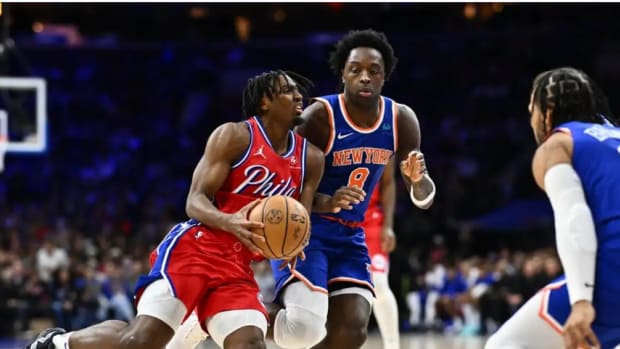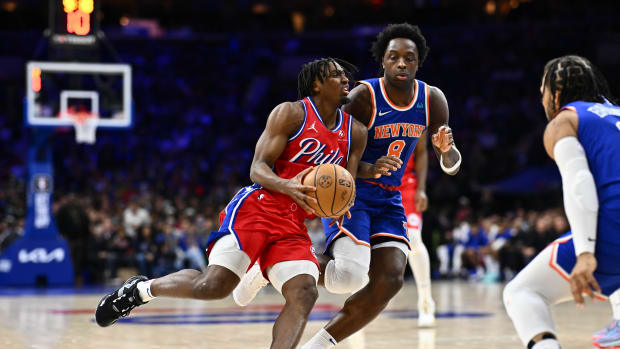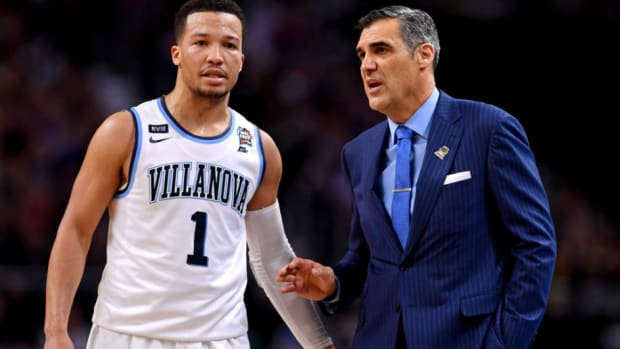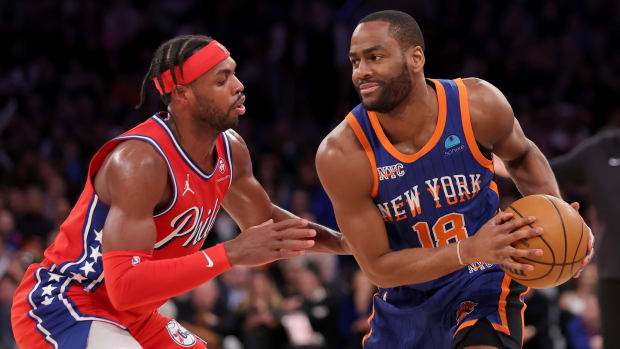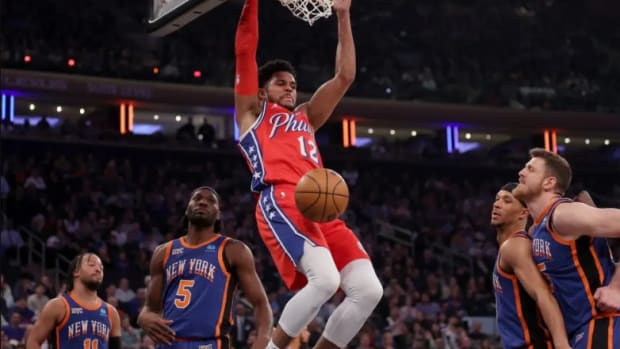How Much Do the Knicks Need Mitchell Robinson to Shoot?
On New Year's Day, Mitchell Robinson seemed to announce that a new era was beginning.
Against the Portland Trailblazers, he shot a perfect 11-for-11 from the field. He was unstoppable in a Knicks win, a high-efficiency offensive weapon. It was the culmination of a 13-game span in which he took nearly eight shots per game, making 73% of them.
Since then, Robinson hasn't been missing many shots, either. He's shooting 70.2% from the field in the 11 games following January 1's 11-for-11. But he's doing it on just 4.3 shot attempts per game.
This is unsurprising at a basic level. NBA teams look to take away certain things defensively. And nothing the Knicks do is more valuable offensively that getting Mitchell Robinson the ball near the basket, so it is natural this would be item one on opposing to-do lists.
"Well, I think we see different coverages and different things," Knicks coach Mike Miller said of Robinson's usage Wednesday night, prior to New York's 100-92 loss to the Lakers. "So in the games, obviously his looks will change a little bit."
Miller went on to note that, in the recent win over Cleveland, Robinson had one of his best games, in his view, despite taking a single shot all night, with six rebounds, four blocks and a steal, while drawing defensive attention that opened up other Knicks on the floor.
And there is clearly something to that idea. If viewing Mitchell Robinson through the prism of the future, not merely the present, then "opening up for other Knicks on the floor" is a hopefully more offensively lucrative pathway than for the current, more limited offensive options the team has.
Still, if the idea is that the long-term Knicks are going to build around Robinson as one of the key offensive cogs, he simply cannot be a non-factor to get the ball. As Frank Vogel, Miller's opposite number on Wednesday night put it, Robinson is stretching the floor in ways that reflect the pace-and-space NBA, just in a different direction than is commonly thought of when this is discussed.
"Vertical spacing is every bit as important as the three-point line spacing," Vogel said of Robinson. "And we've got two, really three guys who take advantage of that," referring to JaVale McGee, Dwight Howard and Anthony Davis.
The three, wildly different ways those players are used provide different roadmaps for Robinson. Davis is a first option, both in New Orleans and now (if a 1a/1b with LeBron James) in Los Angeles, averaging 18 shots per game. Of course, he is also a skilled shooter from anywhere on the floor, while Robinson still hasn't incorporated even that jumper from, say, 3-7 feet, which would change where and how the Knicks could find him on the floor, as Rebecca Haarlow pointed out to me after the game.
McGee, meanwhile, averages five shots per game for these Lakers. He's absolutely been valuable, starting every game, and plays about as Robinson does right now. There is a problem with a McGee outcome for Robinson as it relates to the Knicks, though. The Knicks do not employ Anthony Davis or LeBron James (yes, shocking but true). So there simply aren't those elite options to take more shots when defenses limit Robinson touches. Julius Randle and Marcus Morris Sr. are not providing the same value at that point as Anthony Davis or LeBron James.
So if the Knicks want to build around Robinson, he simply has to be a more significant part of their offense than JaVale McGee is for the Lakers.
"Mitchell is one of the best lob catchers in the game," Vogel said. "As I watched him play, I'd put him right up there with the best. That's a highly effective skill set that had to bring to a team. So, I don't know if they're looking to get him shots in other ways. But that's a great starting point."
It's Howard that really offers a pathway that makes sense, though not the current version, who plays roughly like McGee for these Lakers. Robinson takes 90% of his shots from 0-3 feet right now. We think of Howard in his prime as getting all his points on monster dunks in Orlando, but in his first ten seasons, he took more than 30% of his shots from 3-10 feet in nine of them (just missing that mark in the other, 29.4%), and made north of 40% of those attempts.
It was, it must be said, a different NBA. That doesn't mean Robinson can replicate Howard's career. But it is a useful model for what a player of Robinson's skill set can aim for. Goals are critical in development, there has to be a destination in mind.
"He's still working on those things," Miller said of Robinson. "The biggest thing with him as he continues to play to his strengths while he continues to grow in other areas and I think he's done a great job of playing to his strengths and doing the things that he needs to do. And I think his numbers back that up and the impact that he's making, but I think he's growing everyday, more confident with stepping away from the basket and doing things we've seen... We will continue to see more of [that] as the season goes."
The Laker game was a microcosm of his recent play. He held his own against the Laker bigs. But the Knicks didn't get him the ball much. He finished with three shot attempts in 24 minutes. Even so, the Knicks were a team-best plus-5 with him on the floor.
So I asked Miller after the game: is this the goal?
"The way they defend, they're one of the top defensive teams in the league with their length," Miller said. "So it dictated where the ball was going to be. We had a low number of paint points for us... so I think it may have cut into his touches. And I think we've got to find more ways to do that. And just couldn't quite find enough pockets to do it."
It's pointed out quite a bit in this space how important it is to find small, measurable goals to evaluate the final half of the season. There may not be a more important data point, given who the Knicks are and what ceilings exist among those on the roster, than this one.

